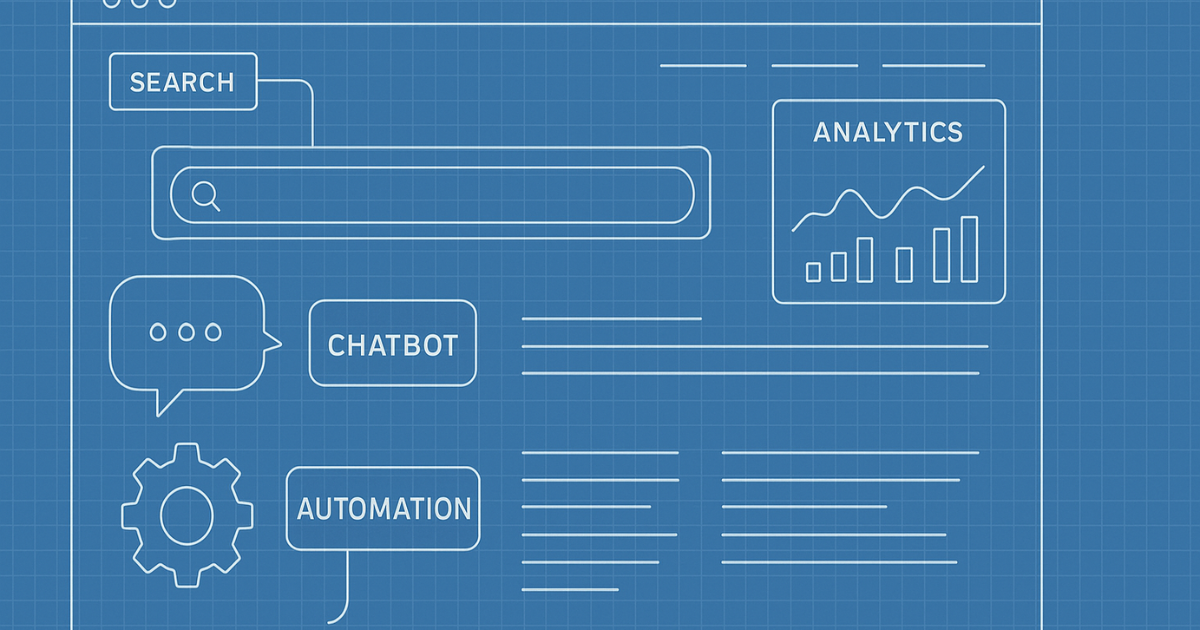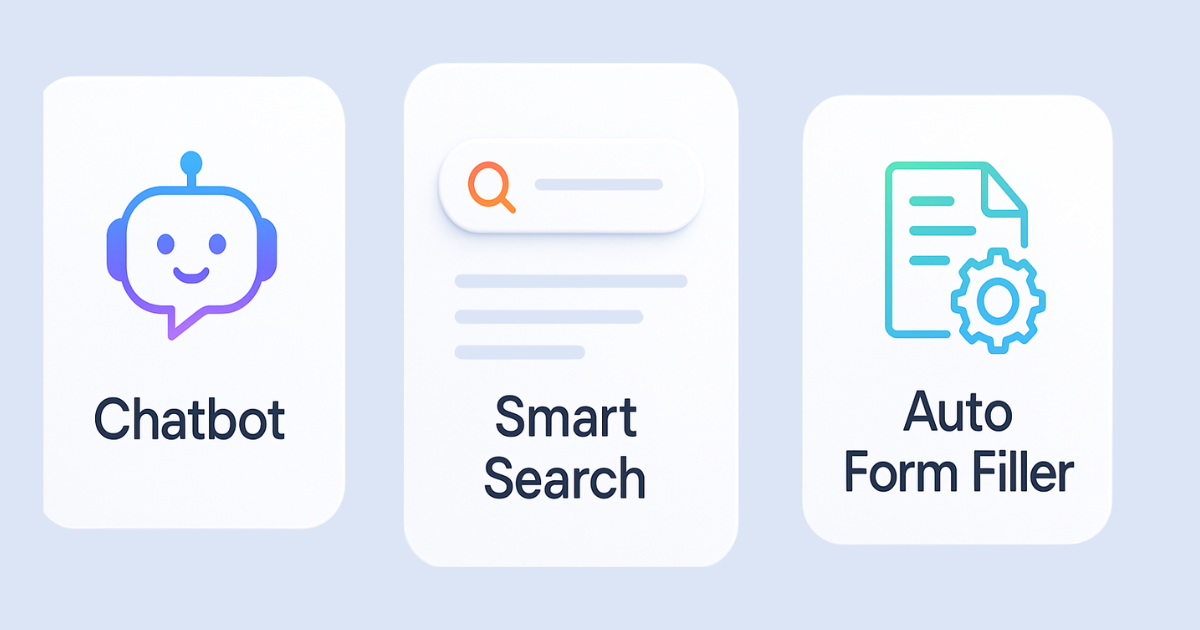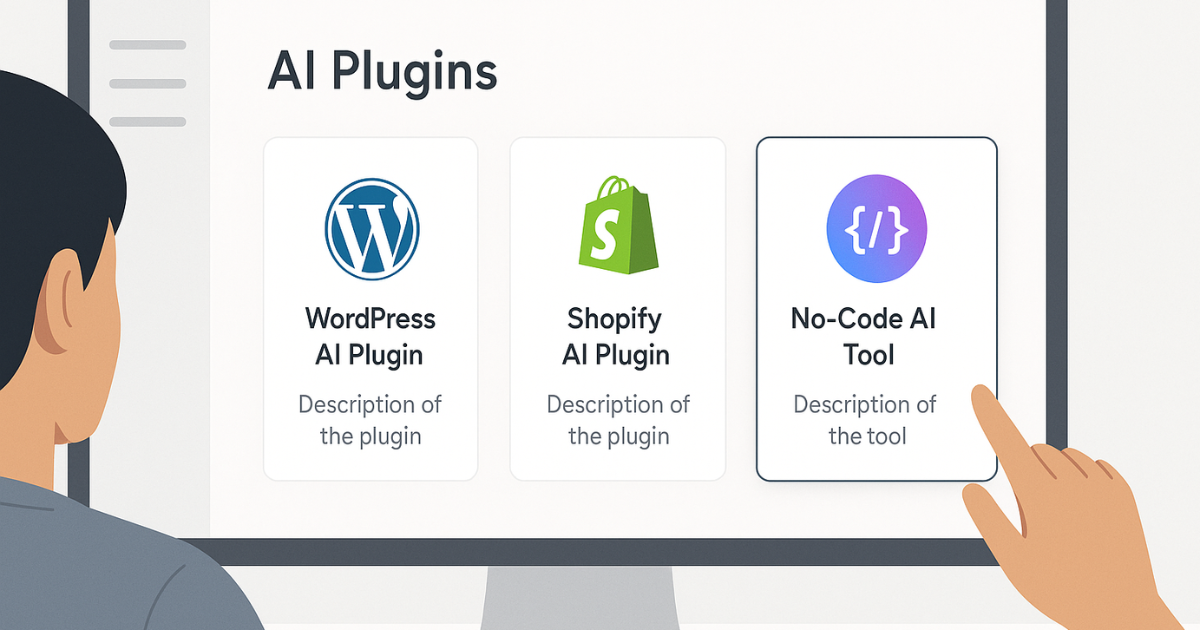Why AI Matters Now More Than Ever
In today’s fast-paced digital world, websites and online stores are no longer just about looking good — they need to be smart, responsive, and personalized. That’s where Artificial Intelligence (AI) comes in.
From intelligent chatbots that answer questions 24/7 to product recommendations that boost sales, AI has moved from tech buzzword to real-world game-changer — especially for small businesses and startups.
The best part? You don’t need to be a programmer to get started.
In this beginner-friendly guide, we’ll walk you through:

- What AI integration means
- The benefits for your website or eCommerce store
- Tools you can use (even if you’re non-technical)
- Mistakes to avoid
- And how to decide if you need expert support
Whether you’re running a business, freelancing, or building your first website, this guide will show you how to add real value with AI — without breaking the bank or your brain.
Let’s dive in.
What is AI Integration for Websites?
Simple Definition
AI integration means adding tools and features powered by artificial intelligence to your website or online store. These tools help your site become smarter — able to respond to users, make decisions, and even improve itself over time.
What It Looks Like in Practice
Instead of manually replying to every message or guessing what your customers want, AI can:
- Handle live chats
- Suggest products
- Analyze user behavior
- Personalize content in real-time
- Automate repetitive actions (like abandoned cart emails)
In short, AI makes your website work harder and smarter — even while you sleep.
The Big Misunderstanding
Many people think AI is only for tech giants or requires coding knowledge. In reality, today’s AI tools are built for everyday website owners, business owners, and freelancers. With the right setup, you can integrate powerful AI features using drag-and-drop builders, no-code plugins, or expert support.

Why Integrating AI Into Your Website Is a Smart Move
Unlocking Real Value
AI isn’t just about automation — it’s about creating better, faster, and more personalized experiences. Whether you’re running a simple service site or a full eCommerce store, integrating AI can give you an edge in customer engagement, sales, and efficiency.
The Top Benefits
- 24/7 Customer Support with Chatbots
AI chatbots can handle inquiries instantly — day or night. They reduce support load, answer common questions, and even guide visitors to take action. - Higher Conversion Rates
Personalized recommendations, exit-intent popups, and AI-generated offers can significantly increase sales or lead form submissions — without manual effort. - Smarter Analytics & Decisions
AI tools don’t just track visits — they analyze user behavior, spot trends, and help you make informed business decisions backed by data. - Time & Cost Savings
Automating repetitive tasks like appointment confirmations, product tagging, or sending follow-ups lets you focus on growth — not admin work. - Personalized User Experiences
From showing the right product to the right visitor, to adjusting content based on location, behavior, or preferences — AI makes websites feel human.
Not Just for Big Businesses
The best part? These benefits are no longer exclusive to big tech companies. With today’s affordable tools and expert help, even solopreneurs and startups can harness AI to compete smarter.

Simple AI Features You Can Add Today — No Coding Needed
Make It Accessible
The idea of “AI” might sound intimidating, but many of the most useful tools are surprisingly easy to add. You don’t need to write code or hire a big tech team — just install a plugin, connect a tool, or use a pre-built integration. Here are a few beginner-friendly features to get started:

How to Add AI Features to Your Website (Even If You Don’t Code)
Empower Beginners
You don’t need to be a developer or tech wizard to bring AI into your website. With today’s no-code and low-code platforms, it’s easier than ever to get started. Here’s a practical roadmap anyone can follow:
WordPress users can install AI plugins.
Shopify store owners can use Shopify Magic.
Wix offers built-in AI for SEO, chat, and design.
➡️ Make sure your platform supports 3rd-party apps or plugin integration.
• Do I want a chatbot for support?
• Do I want personalized product suggestions?
• Do I want smarter forms or content generation?
➡️ Pick one goal and stay focused to avoid overwhelm.
• Tidio, AI Engine (WordPress)
• Shopify Magic (Shopify)
• Zapier, Jotform (No-code)
➡️ Read reviews, test demos, and choose tools with great documentation and support.
• Install the plugin or app
• Authorize access (if needed)
• Configure settings like chatbot greetings, logic rules, and display conditions
➡️ Most tools offer visual interfaces and walkthroughs.
• Test across devices (mobile, tablet, desktop)
• Try different user inputs
• Fix anything confusing or broken
➡️ Ask a friend or colleague to test for fresh perspective.
• Improve user experience
• Tweak settings
• Add more features as you grow
➡️ Don’t try to perfect it all at once — launch, learn, and iterate.
Take Action
In less than an hour, you could have a smart chatbot answering your visitors or forms that adjust based on user input. The secret isn’t knowing everything — it’s taking the first step.

Top Tools That Make AI Integration Easy (Even for Beginners)
You don’t have to reinvent the wheel — there are powerful AI tools already built for small businesses and creators. Whether you want a chatbot, personalization, or smart forms, these platforms can help you integrate AI into your website in just a few clicks.
Tool Recommendations (Grouped by Purpose)
AI Chatbots
- Tidio – AI-powered live chat and chatbot system for sales and support.
- ManyChat – Chat automation tool ideal for social platforms like Instagram and Facebook.
- Intercom – Enterprise-grade customer service and messaging platform.
Smart Search & Recommendations
- Algolia – High-performance AI search and recommendation engine.
- Shopify Magic – Built-in AI for product descriptions and personalization.
No-Code AI Builders & Assistants
- Zapier – Connect AI tools to your website workflows without code.
- Durable – Instant AI-generated websites and CRM for freelancers and small businesses.
- Webflow + Logic – Visually build custom AI workflows with no-code triggers.
AI Form Builders & Lead Capture
- Jotform – Smart, responsive forms with AI field logic and integrations.
- Typeform – Conversational forms that boost completion and engagement.
AI Plugins for WordPress
- AI Engine – Add AI writing, meta generation, and chat tools inside WP dashboard.
- Bertha AI – Built for content creators using WordPress to write faster and better.
Closing Encouragement
The key is to start small and use the right tools to save time and deliver value. These platforms are designed to scale with you — so you can build smarter, not harder.

Learn From Others: Avoid These AI Integration Mistakes
Adding AI to your website or online store is exciting — but it’s easy to get carried away or miss critical steps. Many beginners fall into the same traps that lead to frustration, wasted time, or a poor user experience. Here are the most common mistakes (and how you can avoid them):
Adding Too Much Too Fast
Trying to launch five AI tools at once will only overwhelm your system — and your users.
Start with one focused feature (like a chatbot or smart form), get it working well, then scale up gradually.
Not Testing the User Experience
AI tools are only helpful if they actually work for your visitors.
Always test on desktop and mobile. Ask a friend or non-techie to try the feature and share honest feedback.
Using Tools Without a Clear Goal
Don’t install an AI plugin just because it looks cool.
Clarify what problem you want to solve (e.g., better support, more leads, faster search), then choose the right tool for that purpose.
Ignoring Data Privacy & Consent
AI often collects user data — make sure you’re compliant.
Include cookie banners, consent forms, and update your privacy policy to reflect AI-based features.
Not Monitoring & Updating
AI tools aren’t “set and forget.”
Use the analytics dashboards most tools provide. Check what’s working, what’s not, and optimize regularly.
Pro Tip
Before going live, act like your ideal customer. Visit your website on mobile, try your chatbot, submit a form — and fix anything that feels clunky or confusing.

Real Businesses, Real Results: How AI is Making a Difference
Want proof that AI works? Here are real-world examples of businesses—small and large—that have successfully integrated AI into their websites or stores. These stories show how even small changes can lead to big results.
Small E-Commerce Store Boosts Sales with Chatbot
A UK-based handmade jewelry store added a simple AI chatbot using Tidio.
Within 30 days:
- Customer inquiries were answered instantly, 24/7
- Cart abandonment dropped by 15%
- Weekly sales increased by 22%
“It’s like having a sales rep working all day and night — without paying for one.”
Blogger Uses AI Writer to 2x Content Production
A solo blogger on WordPress installed the AI Engine plugin to generate first drafts, titles, and SEO meta data.
The result:
- Content creation time cut in half
- Website traffic increased 3x over 2 months
- Consistent weekly posting schedule achieved
“AI gave me the momentum I needed to grow.”
Online Store Personalizes Experience with AI Search
A fashion retailer on Shopify integrated Shopify Magic for AI-powered product recommendations and personalized search.
After 6 weeks:
- Time spent on site increased by 40%
- Return visits went up by 28%
- Conversion rate improved by 18%
“It feels like the site reads our customers’ minds.”
Service Business Automates Bookings with Smart Forms
A small photography studio used Jotform‘s conditional logic and AI features to:
- Let clients choose packages, dates, and preferences
- Automatically sync bookings with their calendar
- Increase leads by 35%
“We spend less time on admin and more time creating.”
AI Isn’t the Future — It’s the Now
Integrating AI into your website or online store isn’t just for big tech companies anymore. Whether you’re a solo creator, a startup, or a growing e-commerce brand, AI tools can help you save time, boost engagement, and grow faster — often with little or no code required.

Ready to Bring AI to Your Site?
At Empex Digital, we specialize in helping small businesses and creators build smarter, faster, AI-powered websites.
👉 Need help integrating AI tools?
👉 Want a personalized consultation on what’s possible for your business?
📞 Book a Free Consultation
or
📧 Email us at info@empex.co.uk
Let’s turn your website into a 24/7 sales & support machine.
The future isn’t coming — it’s already here.

Thanks for sharing this! Very helpful 👌